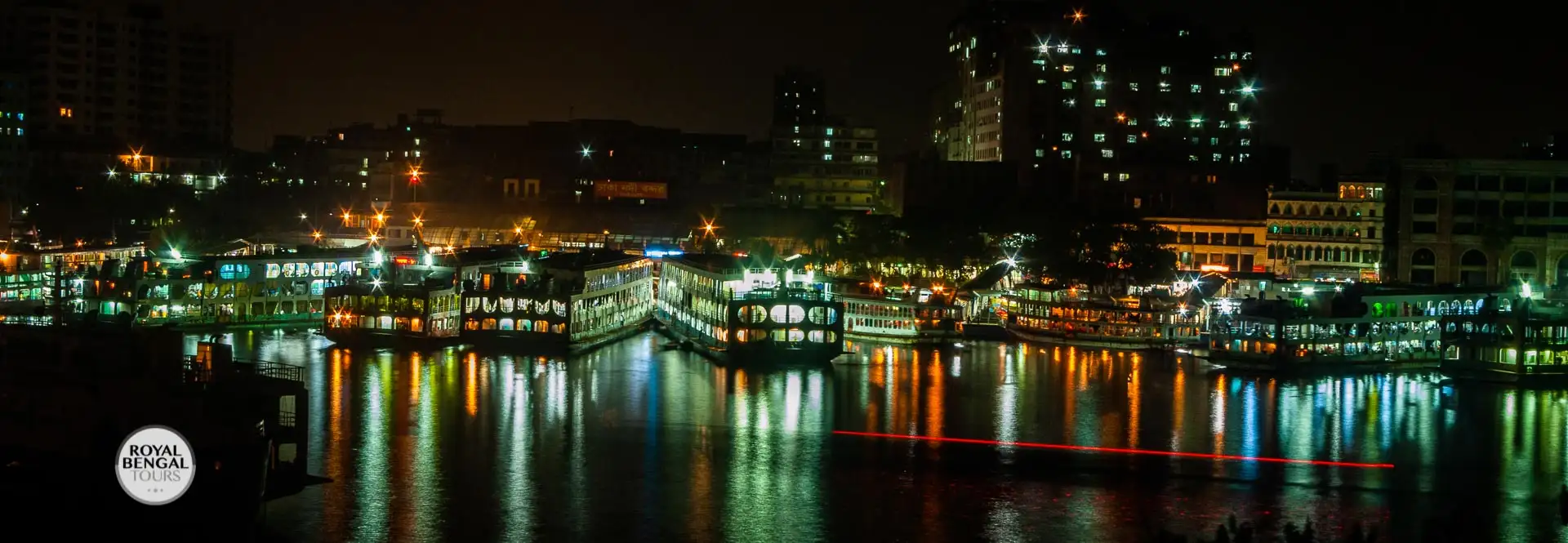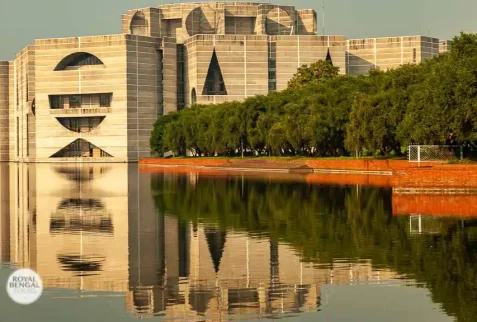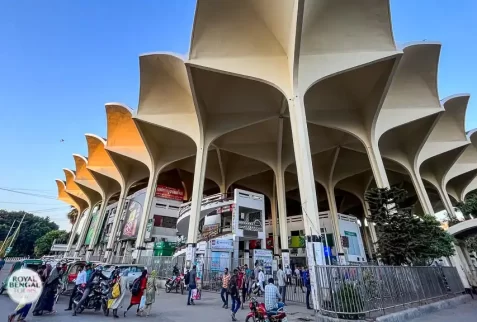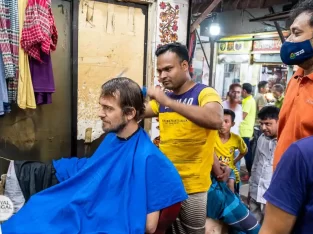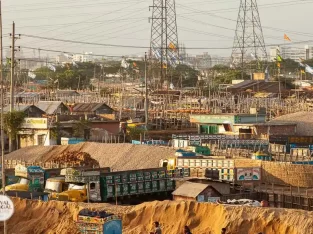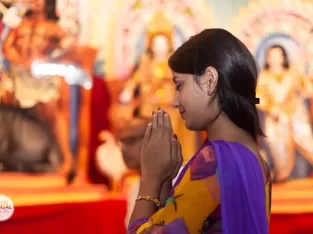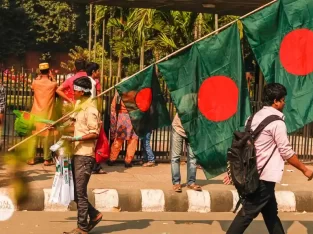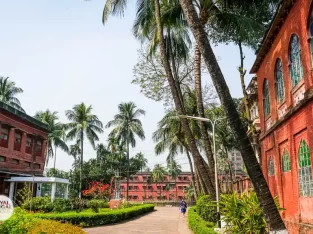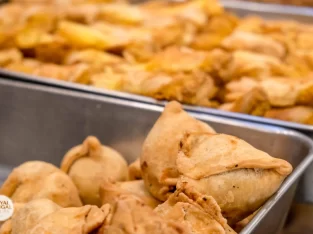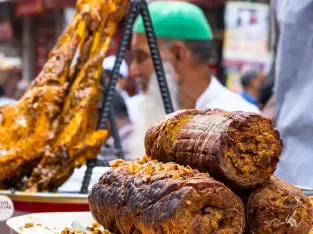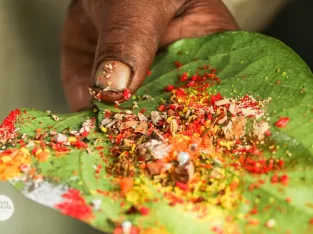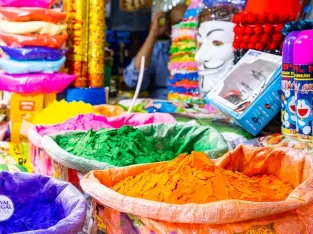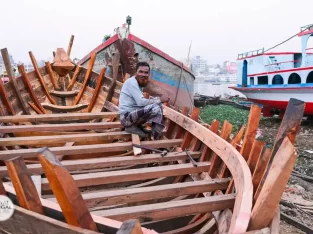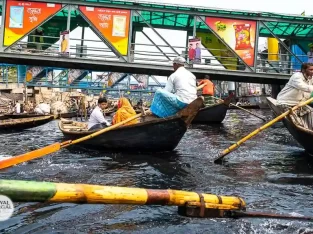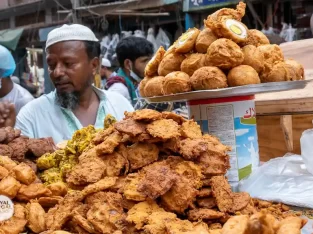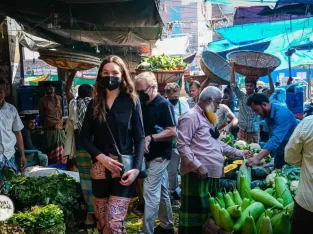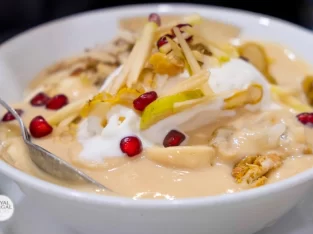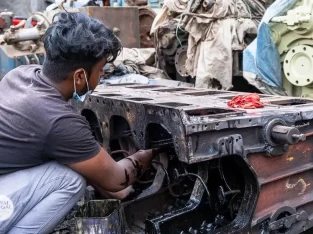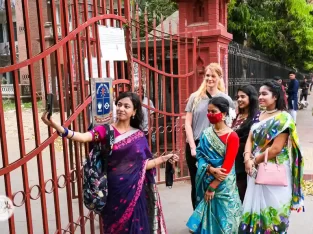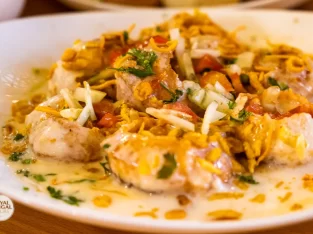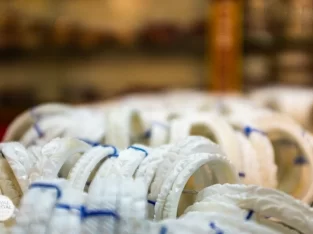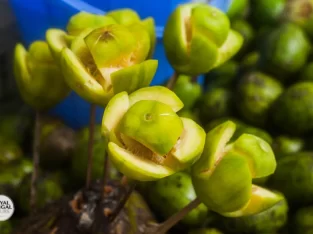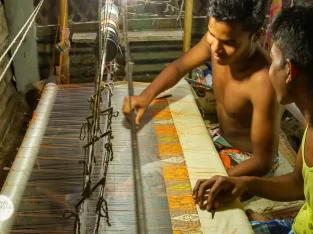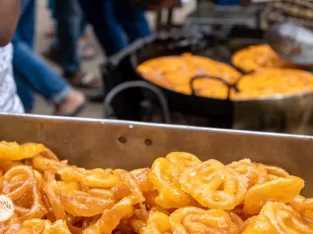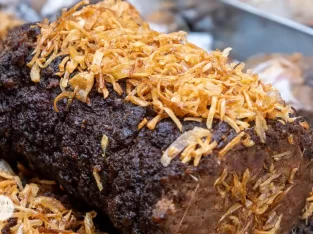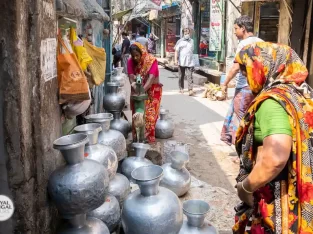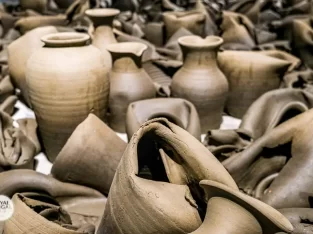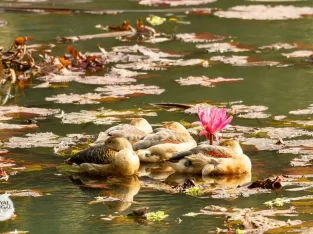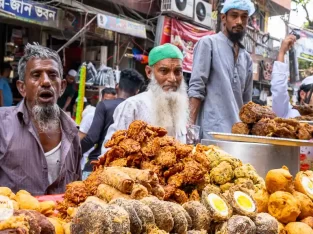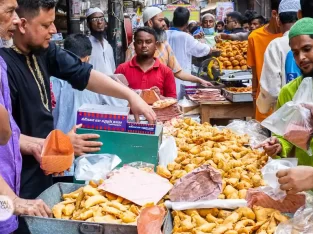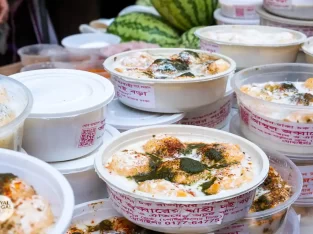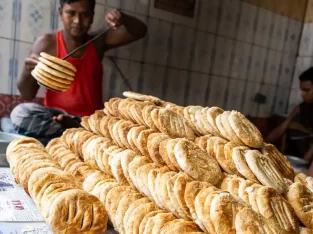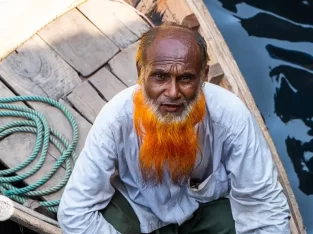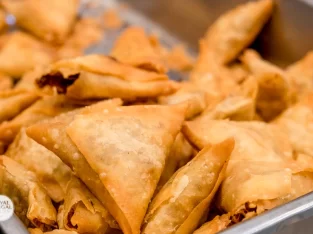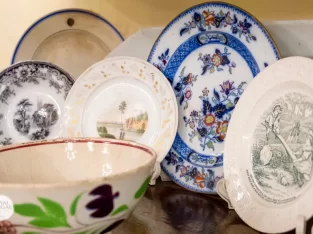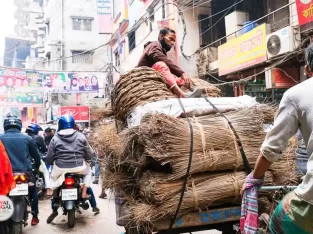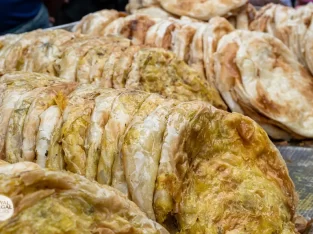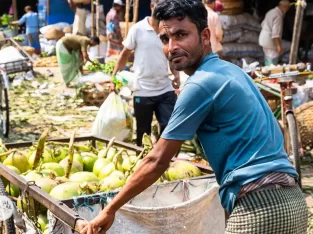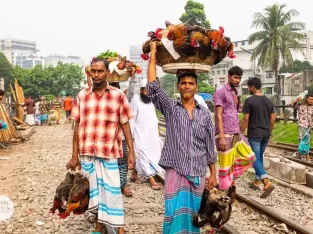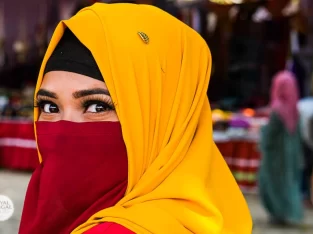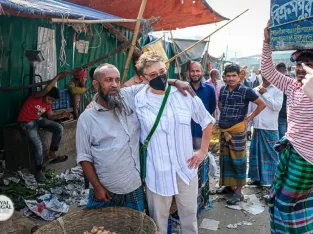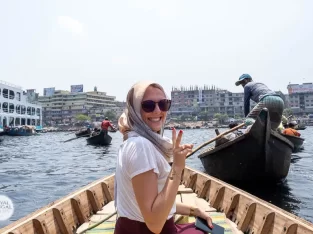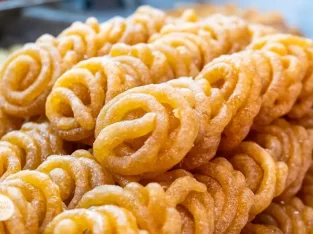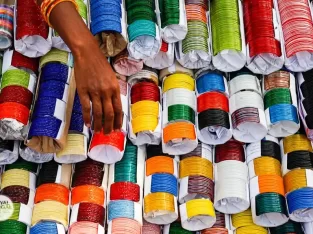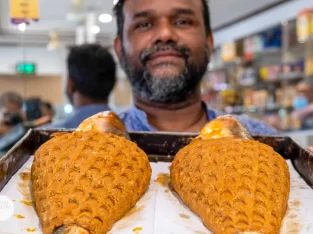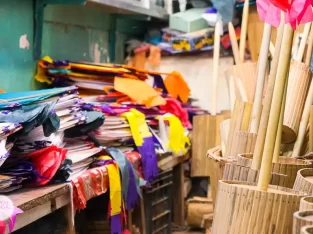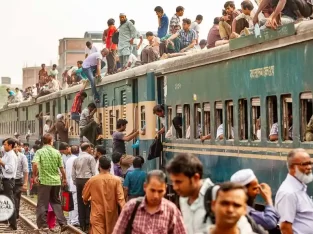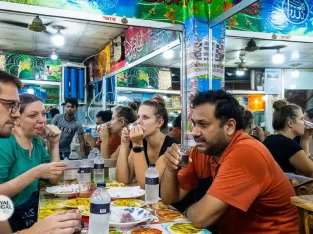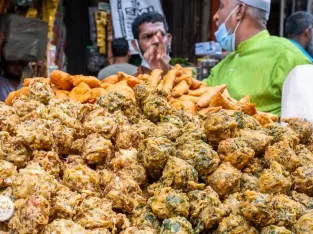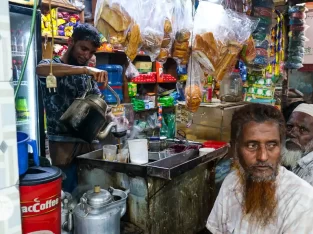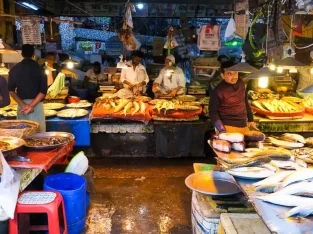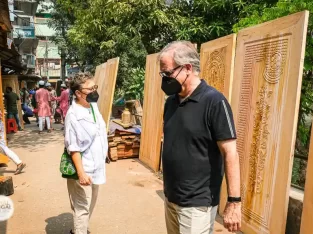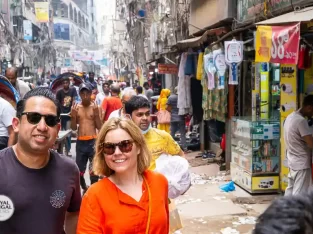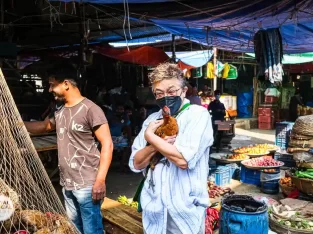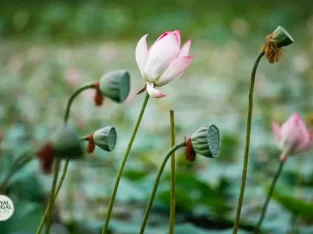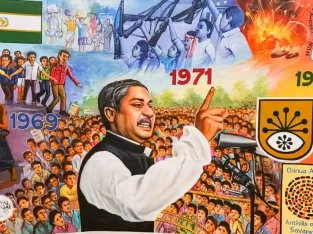Attractions in and around Dhaka;
Sadarghat (Riverfront): “If all the rivers of Bangladesh were the road, then Sadarghat would be the main bus terminal”, this port is very well connected to all parts of the country through the river. About 200 large and small passenger launches (motorized boats) & 40,000 people depart and arrive at the terminal every day. At this place the scene of hundreds of taxi boats laden with passengers and merchandise crossing the river is fascinating. A panoramic view of the busiest river from the roof of a waiting ship would make your day.
Lalbagh Fort: Foundation was started in 1678 A.D. by Prince Mohammad Azam, son of Mughal Emperor Aurangzeb who was the then Viceroy of undivided Bengal. As per early illustrations, the Burigonga River flowed right in front of the southern gate. Three main buildings are the main attractions of this fort today, the tomb of Bibi Pori in the centre, a small mosque on the western side, governor’s former residence to the left which also contains an audience hall. This fort has been converted into a small museum containing some Mughal-era artifacts.
Ahsan Manzil (Pink Palace): Located on the north bank of the Buriganga river in Dhaka an example of the nation’s rich cultural heritage and holds a small collection of one of Dhaka’s oldest aristocrat families. The palace first served as a government trading center. Lord Curzon, the former British Viceroy of India, used to stay here when visited Dhaka. Afterward, it was sold to the Nawab family of Dhaka mid-19th century and was converted into a private residence. Today’s restored Ahsan Manzil is a monument of immense historical beauty and is very famous to the locals for hangout. It is now converted into a museum and has 23 galleries in 31 rooms displaying portraits, furniture household articles, and utensils used by the Nawab families.
Star Mosque: The most endearing feature of this 19th-century masjid is its mosaic dictation. The inside and outside of this mosque is decorated with mosaic. Small chips of Chinaware-plate, cup etc., and pieces of colorful glass have been used for mosaic. Beautiful flower vases, flower branches, rosset, crescents, stars, and Arabic calligraphic writing have been used in the decoration of the mosque. All over the mosque, the motif of stars dominates the decoration, and the lady who donated the land for the mosque was called Sitara-Banu, which means ‘Star’ in English and Tara in Bengali, so the mosque is called the Star Mosque (Tara Masjid).
Armenian Church: The Armenian Church of the Holy Resurrection, located on church road in Armanitola, is named after the Armenian Colony which settled here in the early 18th century. It was built in 1781 by Bishop Ephraim, on the ruins of an earlier chapel and later in 1837. Nowadays the church is a rare oasis of peace and tranquility inside Old Dhaka, and masses are held during Easter and Christmas. There is a chapel with a broad balcony upstairs, and a cemetery housing the graves of several Armenians who died here.
Dhakeshwari Hindu Temple: The national and most prominent Hindu temple at Dhaka from which a popular legend ascribes the origin of the city. The 11th-century temple is also known as the oldest Hindu temple in the city. Situated at the point where the most ancient fortifications meet with the new and vibrant city of Dhaka. The temple is regularly used for various events, including day-long prayers which are common practice in Bangladesh on national holidays and birth & death anniversaries and wedding ceremonies.
Curzon Hall: One of the best examples of Dhaka’s brick architecture & a happy blend of European and Mughal elements, particularly noticeable in the projecting facade in the north which has both horse-shoe and cusped arches. It is now the science department of the University of Dhaka was meant to be a town hall and was named after Lord Curzon, the Viceroy of India, who laid its foundation in 1904.
National Art Gallery: Situated in the Shilpakala Academy premises, represents a collection of folk art and paintings by Bangladeshi artists.
Rickshaw Painting: Dhaka is also a city of rickshaws, human paddled with bamboo, and wooden crafts on a metal frame, which usually looked very colorful with the famous painting all around. It looks very beautiful for painting and colorful paper wrapped around the body and the painting is a very creative task for a rickshaw maker. It is always the reflection of the painter’s dream on the back of the tin sheet and the frame of the body. The painting subject could be natural scenery, film posters, animals, or religion. The artist’s choice and test may differ due to the regional cultural influences on the painter’s mind. The Rickshaw painting industry is in an alarming situation due to Modern technology and developments. It is worth having a piece of rickshaw painting as a souvenir while visiting Bangladesh. There are only two painters alive and living in Dhaka city, unfortunately, they both are in critical health situations at present. We can help you to get one before they are all finished.
National Memorial: Located at Savar, about 35 km north-west of the capital city, was built to commemorate the millions killed in the struggle for the country’s independence in 1971. The monument is composed of seven isosceles triangular pyramid-shaped structures, representing the seven different conflicts that happened during the Pakistan period, between 1952 to 1971. This amazing architecture seems to change its configuration from different angles. Jahangirnagar University and its sprawling campus is also located nearby, which is a paradise bird watcher over the winter, some magnificent architecture of famous Bangladeshi architect Muzharul Islam, still stands on the University campus.
Sonargaon: The first capital of east Bengal, about 29 km southeastern direction from Dhaka. The historic Sonargaon means “Golden Town”. From the 13th to 17th century it was the capital of the Muslim rulers of East Bengal where a mint was also set up. Panam City was the center of the upper-middle-class Hindu Merchants of Sonargaon. It was an important center for the manufacture of the finest muslin, cotton cloth, and different types of jute products in India. That reigning king was Isa Khan Masnad-i- Ala who, along with his daring son Musa Khan, were among the most powerful Bara-Bhuiyans of Bengal. In 1608, with the establishment of Dhaka as the provincial Mughal capital of Bengal, its fame for excellent cotton fabric continued undiminished until foreign competition ruined its trade. The golden city of the past, for a few decades Sonargaon was like a ghost town in which the atmosphere of the Hindu zamindars (Landlords) lingers among the old mosques, rajbari, and architecture that survived the decline. Still, you will find much to see here, well-maintained Folk Art Museum, Panam Nagar, and Goaldi Mosque area worth visiting.

